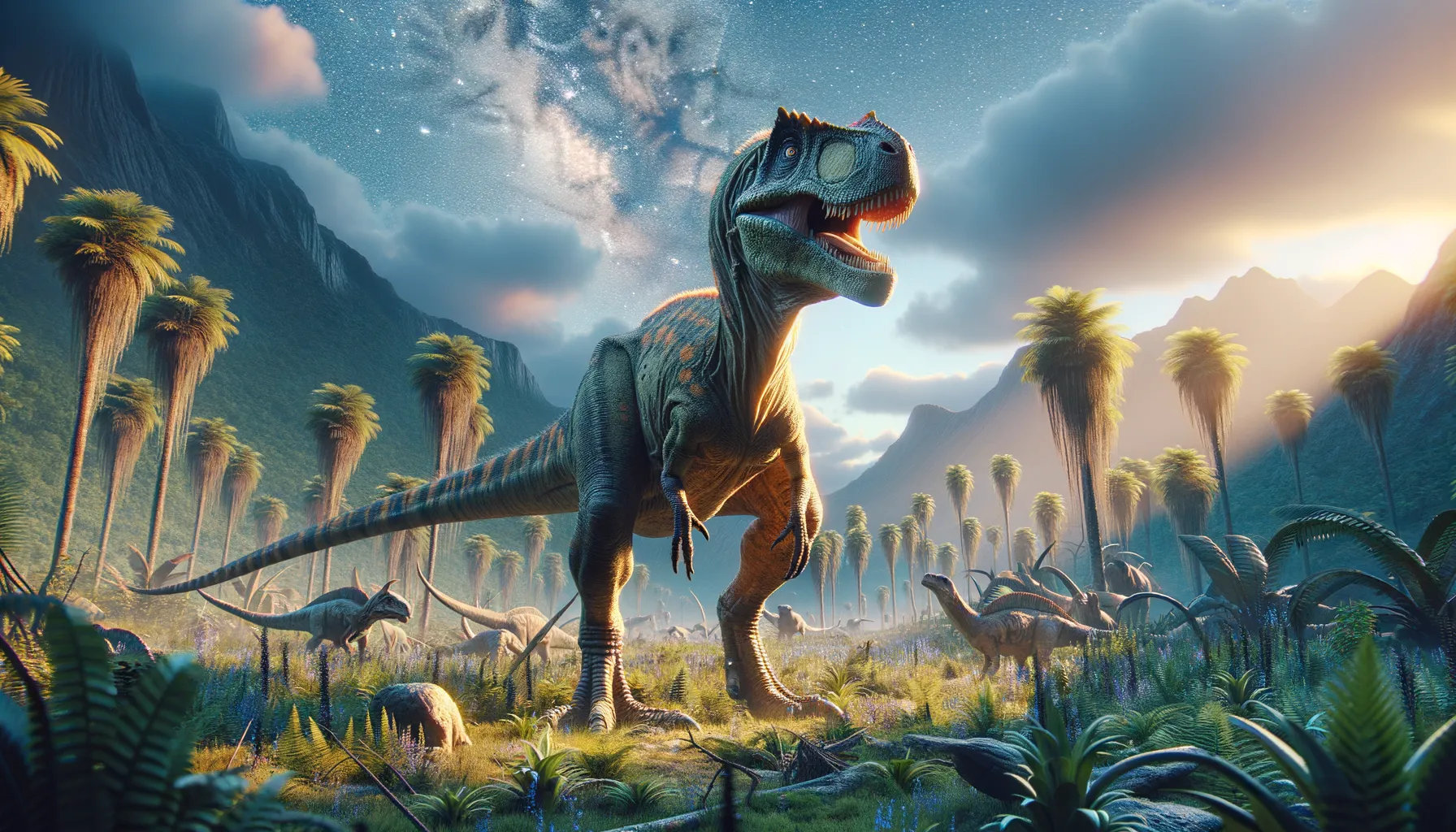
Sarcosaurus
A Jurassic predator of moderate means.
Period
Jurassic
Length
About 3.5 meters long.
Height
Approximately 1.5 meters tall.
Weight
Around 150 kilograms.
Sarcosaurus was a small theropod dinosaur that lived during the Early Jurassic period. It was known for its relatively light build and carnivorous diet. Discovered first in England, this dinosaur has intrigued paleontologists due to its resemblance to more familiar Jurassic predators. Despite its size, Sarcosaurus played a significant role in its ecosystem. Its fossil remains provide crucial insights into the evolutionary adaptations of early theropods.
Diet
Sarcosaurus was a carnivore, primarily feeding on smaller animals. Its diet likely included small vertebrates and possibly insects.
Hunting
It likely relied on stealth and quick bursts of speed to catch prey. Its build suggests it hunted alone rather than in packs.
Environmental challenges
Sarcosaurus faced the challenges of surviving in a world dominated by larger predators. Its environment was a mix of humid forests and open landscapes, demanding versatile hunting strategies. Adapting to these varying conditions would have been crucial for its survival. The thickness of vegetation may have also provided cover from larger threats.
Speed
Moderate runner for its size.
Lifespan
Estimated at several decades.
First discovery
Discovered in England in 1921.
Fun Facts
- Sarcosaurus was a small dinosaur that lived during the Early Jurassic period, around 200 million years ago.
- This dinosaur's name means 'flesh lizard', a nod to its meat-eating diet.
- Sarcosaurus was a theropod, which means it walked on two legs and was likely a swift predator.
- It is known from very few remains, which were discovered in England, making it one of the earliest known theropods from the region.
- Despite its fierce name, Sarcosaurus was relatively small compared to other predatory dinosaurs, measuring about 3 to 4 meters in length.
- The first Sarcosaurus fossils were discovered in the 1920s, providing early insights into the diversity of dinosaur species in Europe.
- Sarcosaurus had sharp teeth and claws, which it likely used to catch and eat smaller animals.
Growth and Development
Growing from hatchling to adult would have involved significant changes in body size and hunting ability. Young Sarcosaurus likely had to rely on their speed and smaller prey. As they matured, their diet expanded to include a wider range of prey. The period of development could have seen juveniles being vulnerable to predation.
Habitat
Sarcosaurus thrived in a range of environments, from forested areas to open plains. The mix of these habitats offered both protection and hunting opportunities. Its ability to adapt to different terrains gave it an ecological advantage. Seasonal changes would have demanded adaptability in its food sources and foraging behavior.
Interaction with other species
Sarcosaurus may have competed with other small theropods for resources. Its role in the ecosystem might have included both predator and scavenger behaviors. Interaction with larger predators would likely have been limited to avoiding conflicts. Fossil evidence suggests a complex web of interactions with contemporary species.
Natural lifespan
Sarcosaurus lived for several decades under natural conditions.
Reproduction
It likely laid eggs, nesting in hidden or protected areas. Parental care behaviors are speculative, but juveniles might have been independent soon after hatching. Reproductive success would have depended on environmental conditions and predation pressures.
Social behaviour
Sarcosaurus might have been solitary or operated in loose networks. It likely maintained territories to ensure access to prey and avoid conflict. Social interactions, if any, would have been limited to mating and resource defense. Group living is considered unlikely given its small size and the need for stealth.
Fossil locations
Fossils of Sarcosaurus have been primarily found in England. These specimens provide a rare glimpse into the diversity of Early Jurassic theropods. Geological formations where remains were discovered suggest a variety of ancient environments. Continued discoveries in similar regions could offer more insights into its lifestyle.
